Donald Trump’s election to the presidency generated numerous articles expecting or advocating a rapprochement or even a “grand bargain” with Russia. This reaction reflected Trump’s many favorable campaign statements about Vladimir Putin and the widely-perceived desirability in both Washington and Moscow of improved relations between the United States and Russia. Indeed, the Duma rejoiced at his election.1 But today, there is no hope for this rapprochement, let alone a grand bargain. Trump’s bombing of a Syrian air base in retaliation for its use of chemical weapons confirms that assertion.2 Indeed, Trump’s strike means that the United States will not avoid using force to defend its vital interests and be bound by other institutions or governments’ ideas. Thus, it is a message to both allies and adversaries, including North Korea, Syria, Iran, China, and Russia.3 Given Xi Jinping’s presence when Trump informed him about the Syrian bombing and the impression of a growing momentum in their relationship, the dynamics of triangular relations appear to have been abruptly turned topsy-turvy.
Beyond Syria, the Trump administration has recently announced its support for sanctions and Russia’s exist from Ukraine, while continuing NATO’s buildup in Europe and an apparent program of nuclear and military modernization.4 Trump may actually even consider giving Ukraine lethal weapons to counter Russian forces.5 Nikki Haley, the US Ambassador to the UN, also remarked, “we should never trust Russia.”6 These recent developments seem to be the obvious result of the revelations of Russia’s information warfare against the United States, massive elite and congressional opposition to a deal with Russia, and the intense anti-Russian public opinion due to Moscow’s aggressive behavior in Europe and the Middle East. Perhaps less apparently, they also appear to be the result of military professionals gaining control in the midst of the Trump administration’s congenitally dysfunctional behavior. As I have observed elsewhere, “it is clear that Trump cannot control himself or his own administration.”7 If Trump wanted better ties with Russia, he has effectively lost control of his intended policy by making personnel decisions that boosted his image as a strong leader accepting the US military’s judgments at a time of increased threats.
Had a rapprochement begun with Putin (we could only recognize a grand bargain after smaller positive steps toward that objective had occurred), it could have engendered a major and deliberate transformation in the triangular relationship. This would have manifested by moving US and Russian policy away from China and toward each other, transforming the poisonous US-Russia relationship and the intimate Russia-China ties that had developed in 2016. Indeed, by Trump’s inauguration, China was probably closer to both Russia and the United States than they were to each other and, therefore, benefitted from the logic of the well-known strategic triangle. Even more tellingly, China has increasingly been able to subordinate Russia to its ambitions in supporting the Silk Road concept, obtaining preferential terms for arms sales and entry into Russian energy firms, and eliciting Russian geopolitical support in Asia. Russia now inclines toward China’s position on Korea and the South China Sea and has eschewed concessions to Japan in their recent bilateral summit.8 Trump was expected to woo Putin and reshape the triangle.
While Washington and Beijing view each other as their principal interlocutor on Asian if not global issues, Barack Obama considered Moscow important merely in regards to Afghanistan and Iran, and neglected Russia as a major Asian actor. Obama was also skeptical about whether Moscow could cooperate with Washington in the anti-terrorist campaign against ISIS, even before Moscow intervened in Syria.9 While those postures remain in effect, the situation has actually worsened. Moscow has forged a working partnership with Tehran in the Middle East. Regarding Afghanistan, Russia now advocates a peace conference supported by Iran, China, and Pakistan, which will admit the Taliban into a supposed “national reconciliation” government, possibly supplied with weapons.10 Instead of signaling to Trump and the United States that Russia is receptive to closer bilateral relations—for instance, on Iran and Afghanistan—signals from Moscow made it even harder for Trump to carry forward his oft-expressed wishes for rapprochement.
Had Trump been fully aware of the implications of a rapprochement with Russia and launched it, he would have done so while simultaneously excoriating China for Taiwan, North Korea, and trade and currency issues.11 So, if US-Russia rapprochement had caused a reconfiguration of the strategic triangle, it could only have happened at the expense of China’s ties to both states—and evidently, this concerned China.12 Before the summit, Xi particularly emphasized the need for bilateral trade and investment cooperation with Washington.13 Eager to put US-China relations on a positive footing to impede Trump’s promised hardline on China, Xi, unlike Putin, did not wait for Trump to court him.
Russia had an opportunity to put itself at the pivot of the triangle. Although transforming US-Russia ties would obviously take much time and evolve gradually—since Moscow stated it will not surrender its close ties to Beijing for a thaw with Washington—the transformation would have placed Russia at the center of the triangular relationship.14 Rapprochement with Washington would allow Russia to back away from its growing dependence on China, which was greatly accelerated and intensified by the invasion of Ukraine and its repercussions. It might uncouple Moscow from its support for China on many Asian security issues in Central Asia, East Asia including Korea and Japan, and the South China Sea. It would also materially and substantively affect Moscow’s own “pivot to Asia” that has hitherto remained largely a pivot toward China.15
If Russia were to reorient its policies towards Japan and South Korea into a more genuine rapprochement, potentially with US blessing, this could allow Moscow to resume its policy of playing Tokyo and Beijing off against each other, and normalize ties with Japan and permanently improve that bilateral relationship.16 Then, Russia could further diversify its portfolio of Asian partners and benefit from them, while gaining considerable flexibility and room for maneuver on numerous Asian and even global issues. Russia could even become less viscerally anti-American on the question of the North Korean proliferation—an outcome I had previously conceived of in 2011. In return for greater support against Pyongyang’s nuclear proliferation, Washington could meaningfully invest in the Russian Far East or support Japanese and South Korean investments there—prospects that Trump had made more realistic during his campaign.17
This rapprochement would also have engendered significant changes in international energy policy since Washington might be less prone to undercut Russia by exporting oil and gas (primarily shale oil, and liquefied natural gas derived from shale) abroad, especially in Europe and Asia, despite the obvious advantages of doing so on both continents.18 That possible outcome, according to the Chinese specialist Wang Tao, apparently aroused concern in China concerning its future energy ties to both Washington and Moscow.19 Instead, no rapprochement has occurred and US-Russia relations are still deteriorating, while China is boosting its relations with the United States.
Trump reacted very positively to his summit with Xi Jinping and backed away from his pro-Taiwan rhetoric, while Secretary of State Rex Tillerson openly used China’s characterization of their bilateral relationship.20 The two sides agreed to a process to resolve trade disputes, and Trump is scheduled to visit China even though no specific accords were reached at the summit.21 Meanwhile, the growing danger of the North Korean nuclear program exerts pressure on both Beijing and Washington to cooperate to defuse the threats posed by North Korea. Indeed, Trump stated that he essentially offered better trade relations with China in return for its pressure on North Korea, and stopped calling China a” currency manipulator.”22 Subsequently, both China and the US have intensified pressures on North Korea. Washington sent the USS Vinson to the Korean Peninsula and China reportedly sent 150,000 troops to its border with North Korea, while also threatening to cut off oil shipments if Pyongyang continues its nuclear testing. At the same time, Beijing is issuing clearly anxious calls for both sides to refrain from provocative actions as it sees “storm clouds” gathering over Korea.23 This hardly betokens a US-China rapprochement or G-2. Indeed, Trump warned in advance that the summit would be difficult.24 Even so, there are opportunities for improved relations, particularly given the enormous difference in ties with Russia.
Even if the positive scenario materialized, it would be difficult, if not impossible, to expect positive US-Russia cooperation on Asian security issues, for the reasons given above and due to the developments in Asia and Russian policy. Before Syria made things worse, a precondition for any rapprochement with Russia meant either Russian withdrawal from Ukraine or Western acquiescence to Putin’s aggression there—neither of which is conceivable.25 Furthermore, the issues in contention between Moscow and Washington are largely confined to Europe and the Middle East, or specific topics like arms control. Russia strongly opposes the US THAAD deployment in South Korea and missile defense in Japan, and although Russia is discussing normalization with Japan, there is no agenda for bilateral cooperation regarding Asia. THAAD is not a subject for negotiation as long as North Korea only threatens the United States and its main allies in the region. Russia also does not have any answer for the Korean crisis besides blaming Washington for the North Korean missile and nuclear programs and denouncing THAAD, even though the program makes eminent sense for South Korea given Pyongyang’s behavior.26 In fact, Russia might even be drawing closer economically to North Korea.27
There is little or no basis for US-Russia collaboration in general, not just in Asia. For Russia, the problem is that its foreign policy in Asia and partnership with China are, to a significant degree, instrumental to the pursuit of extra-Asian gains—for instance, enhancing its status globally at Washington’s expense. Russian foreign policy appears less interested in achieving regional goals in Asia for their own intrinsic value, than in magnifying Russia’s global status and weakening US power and standing. As Robert Legvold acutely observed years ago, Russia wants status not responsibility.28
This posture invalidates Russia’s claims about being a major Asian power and its supposed wishes to forge partnership with the United States in Asia. It is not merely that the Russian government is oriented towards Europe and not Asia.29 Rather, it is that one cannot be a credible Asian power without offering Asian governments something that actually relates to their concerns. They will readily trade with Russia for energy and weapons that they cannot get elsewhere at comparable quality and prices in most cases. But Russia’s own interests, refusal to reform economically in ways that attract Asian interest, and neglect of Asian issues in general deprive it of any credibility in Asia as a major independent Asian power. Though Trump blundered monumentally in rejecting the Trans-Pacific Partnership (TPP), and Russia talked volubly about participation in trans-Asiatic economic projects, it has done virtually nothing to participate in them.30
Ultimately, Russia’s political system remains the fundamental problem frustrating its foreign policy goals in Asia, including its great power status. That includes the ideological representation of Russia as a strong state with a “power vertical.” Actually, the state is the plaything of a small number of elites who are more interested in exploiting than developing it.31 To quote Ivan Krastev, “Russia has not engaged in capacity building but in incapacity hiding.”32 Especially in Asia where the linkage between enhanced capacity and economic development is critical, this masquerade ruins any hope of improving one’s position.
In 2015, Dmitri Trenin celebrated the advent of a Eurasian economic-political network stretching “from Shanghai to St. Petersburg.33 Yet, in June 2016 he wrote,
The dream is over. Eurasia – as another name for the former Russian empire, then the Soviet Union, and finally the former USSR, is no longer useful as a description of a geopolitical and geo-economic region. The rump “little Eurasia” of the Eurasian Economic Union is a modest economic arrangement unlikely to evolve into a close-knit unit. Thus Russia stands alone, partly in Europe, partly in Asia, while the country itself belongs to neither.34
Trenin additionally argued that one cannot postulate Russia’s comprehensive Asia strategy, but rather individual approaches to each state “that need to be harmonized.”35 In other words, the state cannot generate either a domestic transformation of Russia’s Far East policy or external support for transforming it. Consequently, the warnings by Putin, Prime Minister Dmitri Medvedev, and other powerful elite about the urgency of that transformation are no closer to realization then they were a decade ago.36 Instead, for the first time in modern history, Asia and Eurasia are being integrated by China at Russia’s expense. If Russian policy continues along that path, then Beijing and Washington will probably determine the future of Asia in Russia’s absence, as it has essentially marginalized itself in Asia.
1. David Filipov and Andrew Roth, “Yes We Did’: Russia’s Establishment Basks In Trump’s Victory,” Washington Post, November 9, 2016.
2. Peter Baker, Neil MacFarquhar and Michael R. Gordon, “Syria Strike Puts U.S. Relationship With Russia At Risk,” The New York Times, April 7, 2017.
3. Admiral James Stavrides (Ret), “U.S. Shows Allies & Opponents: We Are Willing To Use Force,” The Cipher Brief, April 7, 2017.
4. Rex W. Tillerson, “NATO Foreign Ministerial Intervention Remarks, Remarks
Rex W. Tillerson, Secretary of State, Brussels, Belgium, March 31, 2017,” US Department of State.
5. Jenna Lifhits, “McCain: Trump Administration ‘Seriously Considering’ Lethal Defensive Aid to Ukraine,” Weekly Standard, April 7, 2017.
6. Philip Rucker, “U.N. Ambassador Nikki Haley: “We Should Never Trust Russia,” Washington Post, March 16, 2017.
7. Stephen Blank, “Wanted: Leader Of the Free World,” Atlantic Council, March 22, 2017.
8. Stephen Blank, “Paradoxes Abounding: Russia and the South China Sea Issue,” in Great Powers, Grand Strategies: The New Game In The South China Sea, ed. Anders Corr (Annapolis, MD: US Naval Institute).
9. Testimony of Victoria Nuland Assistant Secretary, Bureau of European and Eurasian Affairs Before the House Foreign Affairs Committee, Washington, DC, November 4, 2015; Leslie Wroughton and Matt Spetalnik, “Russian Suspicions of U.S. Motives in Syria Make Cooperation Unlikely,” Reuters, Septenber 28, 2014.
10. Bais Hayat and Hesamuddin Hesam, “Russia Backs Taliban’s Call for Withdrawal of Foreign Forces,” Ariana News, April 1, 2017; “Russia Says Trying To Push Afghan Taliban To Join National Reconciliation,” Radio Free Europe Radio Liberty, April 01, 2017; Indrani Bagcii, “Russia, China and Pakistan for Flexible Ties with Taliban, India Ignored,” Times of India, December 29, 2016; Arif Rafiq, “Pakistan: Russia’s New Best Friend?” National Interest, September 27, 2015; Testimony of General Joseph L. Votel, Commander United States Central command, House Armed Services Committee, March 29, 2017.
11. Mark Landler, “China Learns How to Get Trump’s Ear: Through Jared Kushner,” The New York Times, April 2, 2017.
12. William Ide, “Prospect of Warming US-Russia Ties Worries China,” Voice of America News, January 17, 2017.
13. “China’s Xi Urges Trade Cooperation In First Meeting With Trump,” Reuters, April 7, 2017.
14. “Moscow ‘Won’t Sacrifice Sino-Russian Alliance’ for Potential US-Russian Thaw,” Sputnik News, November 18, 2016.
15. Alexander Gabuev, “A Pivot to Nowhere: The Realities of Russia’s Asia Policy,” Carnegie Endowment for International Peace, April 22, 2016.
16. Mark Katz, “Exploiting Rivalries For Prestige and Profit: An Assessment of Putin’s Foreign Policy Approach,” Problems of Post-Communism, No. 3, 2005.
17. Stephen Blank, “The End of Russian Power in Asia?” Orbis 56 (2012).
18. As regards Asia, see Stephen Blank, “Return Of Shale? Scenarios For the Trump Administration,” Geopolitical Intelligence Services, March 2, 2017.
19. Wang Tao, “Xi’s Global Leadership Ambitions In the Trump Era,” Carnegie-Tsinghua Center for Global Policy, April 6, 2017.
20. Simon Denyer, “In China Debut, Tillerson Offers Reassurance, Receives Praise,” Washington Post, March 19, 2017; Briefing by Secretary Tillerson, Secretary Mnuchin, and Secretary Ross on President Trump’s Meetings with President Xi of China, April 8, 2017.
21. Emily Rauhata and Simon Denyer, “The Kushner Kids On Show, North Korea On Notice, and Other Takeaways From the Xi-Trump Summit,” Washington Post, April 8, 2017;Tom Phillips, “Trump To visit China As Beijing Touts ‘New Era’ Of Ties With US,” The Guardian, April 8, 2017; Tom Mitchell and Shawn Donnan, “Trade War Put On Hold After U.S. and China Agree 100-Day Plan,” Financial times, April 10, 2017.
22. Gerard Baker, Carol E. Lee, and Michael C. Bender, “Trump Says Dollar ‘Getting Too Strong,’ Won’t Label China a Currency Manipulator,” The Wall Street Journal, April 12, 2017; Jane Perlez and Yufan Huang, “China Says Its Trade With North Korea Has Increased,” The New York Times, April 14, 2017.
23. Jane Perlez and Yufan Huang, “China Says Its Trade With North Korea Has Increased.”; Gerry Mullaney and Chris Buckley, “China Warns Of ‘Storm Clouds Gathering’ In U.S.-North Korea Standoff,” The New York Times, April 14, 2007; Alex Lockie, “China Reportedly Sent 150,000 Troops To North Korea’s Border—Here’s How They Could Stop North Korea,” Independent, April 13, 2017.
24. Landler, Katie Hunt and Serena Dong, “Donald Trump Expects ‘Very Difficult’ Summit With Xi Jinping At Mar-a-Lago,” CNN, March 30, 2017.
25. Author’s conversations with Russian and Western diplomats, Washington, D.C., March 2017.
26. Stephen Blank, “Another Russian Failure: Russia and the Korean Question,” Eurasia Daily Monitor, March 28, 2017.
27. Alessandra Colarizi, “Pyongyang Finds an Ally in Moscow,” Asia Sentinel, April 4, 2017.
28. Stephen Blank and Younkyoon Kim, “Does Russo-Chinese Friendship Threaten U.S. Interests in Asia?” Foreign Policy Research Institute, 2015. Robert Legvold, “The ‘Russian question’ in Russia and Europe: The Emerging Security Agenda, ed. Vladimir Baranovsky (Oxford: Oxford University Press for the Stockholm International Peace Research Institute, 1997).
29. Alexander Gabuev, “A Pivot to Nowhere: The Realities of Russia’s Asia Policy.”
30. Stephen Blank, “Russia’s Pivot To Asia: A Balance Sheet,” forthcoming in The National Bureau of Asian Research.
31. Ben Judah, Jana Kobzova, and Nicu Popescu, Dealing with a Post-Bric Rusia, European Council on Foreign Relations, 2011; Alexander Etkind, Internal Colonization: Russia’s Imperial Experience (London: Polity Press, 2011).
32. Judah, Kobzova, and Popescu, Dealing with a Post-Bric Rusia.
33. Dmitri Trenin, “From a Greater Europe To a Greater Asia?” Carnegie Moscow Center, February 26, 2015.
34. Dmitri Trenin, “Russia’s Asia Strategy: Bolstering the Eagle’s Eastern Wing,” French Institute of International Relations, 2016.
35. Ibid.
36. Dmitri Trenin, The End of Eurasia: Russia on the Border Between Geopolitics and Globalization (Washington, D.C.: Carnegie Endowment for International Peace, 2002).
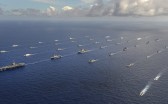
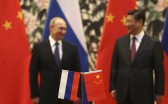
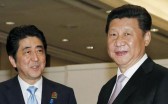
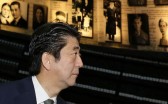
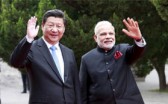
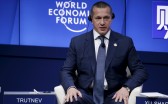
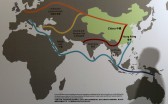
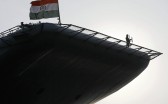
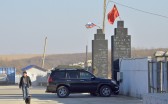
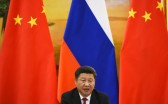
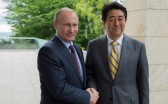
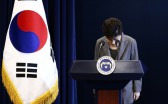
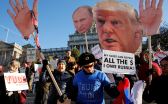
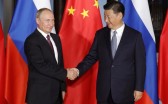
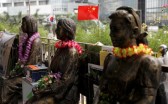
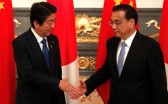
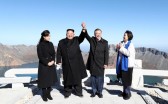
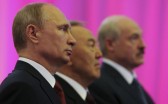
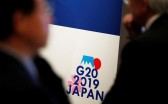


 Print
Print Email
Email Share
Share Facebook
Facebook Twitter
Twitter LinkedIn
LinkedIn